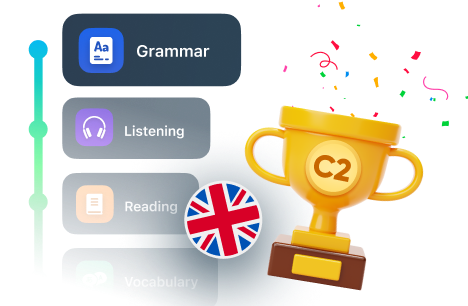
The Essential Role of Languages in Society’s Culture: Spain’s Example
Learning a new language is like going on a journey into a different cultural landscape, where language guides us through the complex traditions, beliefs, and thoughts that define a community.
Languages are the main way we connect with each other and play a key role in shaping and defining the rich details of a society’s cultural identity. They are not just for talking to each other; they hold the collective memory of a community, capturing thoughts, beliefs, values, and the stories passed down from ancestors. This piece delves deep into the critical role languages play in growing and enriching communities’ cultures, looking at the many ways language affects how we think, relate to each other, and see the world.
The cultural identity
Languages deeply influence the creation of cultural identity. The way we talk, the words we use, and how our voice sounds reflect our deep connection to our culture. Every language, with its special way of saying things, jokes, and grammar, tells the story of its people’s history and traditions. Learning a new language is like going on a journey into a different cultural landscape, where language guides us through the complex traditions, beliefs, and thoughts that define a community.
Passing down wisdom through generations with language
Language lets us share wisdom and experiences across time, connecting one generation to the next. Oral traditions, like folklore, myths, and family stories, are the links that keep the past alive, preserving a culture’s collective memory and values. Beyond storytelling, language is central to education, spreading a wide range of knowledge, from scientific discoveries to literature and art. Without language, sharing knowledge and cultural growth would be nearly impossible.
Creating and sharing meanings
The magic of language is like magicians of meaning, allowing us to not just speak but also understand and interpret the world around us. By naming, describing, and discussing, languages enable us to shape our view of reality. The fact that some languages have words for ideas or colours that others don’t highlight the transformative power of linguistic diversity, showing how language colors our view of the world based on the traditions we inherit.
Building social cohesion and connections
Language is vital for social interaction and unity. It’s how we express feelings, share ideas, and establish social rules and values. Language’s ability to change depending on the situation—like being more formal or casual—plays a crucial role in building relationships and community connections. Language practices, varying across cultures, help us understand and respect each other, acting as a measure of social harmony.
Languages as windows to the world
Languages do more than help us talk to each other; they shape our engagement with the world and how we think. Echoing the thinker Ludwig Wittgenstein, the limits of our language are the limits of our world. This means that unique linguistic structures in some cultures, which are absent in others, deeply affect how we see reality. Through this perspective, languages are not just tools for navigation but architects of our experiences, enriching our cultural interactions and expanding our minds.
Spain’s Example
Adding Spain’s specific linguistic diversity to this discussion, we find a wide array of official languages and dialects that offer insights into the country’s rich history and cultural complexity. Spain celebrates not just Spanish but also officially recognizes Catalan, Galician, Basque, and Aranese in their regions, each adding to the nation’s cultural and linguistic diversity.
This variety of languages and dialects in Spain not only adds depth to the national identity but also presents unique challenges and opportunities for preserving linguistic diversity. The existence of these languages within a nation emphasizes the need for inclusive language policies that promote respect and recognition for all languages and dialects as essential parts of cultural heritage.
Encouraging education in multiple languages, supporting media in all official languages and dialects, and celebrating linguistic diversity through cultural festivals are key to ensuring these languages thrive. Ultimately, Spain’s linguistic richness reminds us of the power of language diversity to enhance mutual understanding, foster social cohesion, and appreciate human cultural complexity more deeply.
Spain boasts a rich linguistic diversity, reflecting its complex history and varied geography. Below is a list of the main languages and dialects, their origins, and their areas of use within the Spanish territory:
- Spanish (Castilian): Originating from Latin, it is the official language of the entire country and the most spoken language in Spain. It originated in the Castile region and spread throughout the Spanish territory.
- Catalan: Of Latin origin, it is co-official in Catalonia, the Balearic Islands, and the Valencian Community (where it is known as Valencian). It is also spoken in the eastern strip of Aragon (known as the Franja).
- Galician: A Romance language, co-official in Galicia. It shares origins with modern Portuguese, having developed in the northwest of the Iberian Peninsula.
- Basque (Euskera): A pre-Indo-European language, unique for having no clear relation to any other known language. It is co-official in the Basque Country and some areas of Navarre.
- Aranese: A variant of Occitan, co-official in the Val d’Aran (Catalonia). It comes from the Occitan language spoken in southern France and other Pyrenees areas.
- Astur-Leonese: With variants such as Leonese and Asturian (bable), it is spoken in parts of Asturias and León. It comes from the medieval Astur-Leonese language.
- Aragonese: A Romance language spoken in some areas of northern Aragon. It derives from Vulgar Latin and has influences from Pyrenean languages.
- Andalusian: A dialect of Spanish spoken in Andalusia. It is characterized by its distinctive pronunciation and some unique words, reflecting the historical Arabic and Romani influence.
- Murcian: A dialect of Spanish spoken in the Region of Murcia, with influences from Aragonese, Catalan, and Arabic, reflecting the cultural diversity of the region.
- Canarian: A dialect of Spanish spoken in the Canary Islands, with influences from old Spanish, Guanche (the language of the Canary Islands’ aboriginal people), and Portuguese.
- Extremaduran: A dialect of Spanish with Portuguese influences, spoken in some areas of Extremadura.
- Panocho: A variant of Murcian spoken in the orchard and countryside of the Region of Murcia.


















